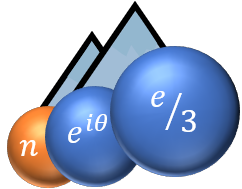Direct contact of a system with topologically protected edge modes and a superconductor can induce superconducting correlations in the edge states leading to the formation of so-called Andreev edge states robust to disorder, electron-electron and electron-phonon interactions. The best way to probe related spatial current distributions is Josephson interferometry for which the structure under study links two superconducting (S) electrodes. In this case, the figure of merit is the maximum supercurrent Ic as a function of the in-plane magnetic field B in a stacked (layered) configuration.
In our experiments, we have applied this technique to study the transport of Cooper pairs through a periodic multilayer formed by 10 normal (N = Al) - ferromagnetic (F = Ni or Ni-Fe alloy) bilayers. For the first time, we observed SQUID-like Ic(B) oscillations instead of conventional Fraunhofer patterns expected for trivial S-weak link-S junctions. For representative S(NF)10NS Josephson junctions, we present our results for the reconstruction of the supercurrent-density spatial dependence. They show that periodic Ic(B) characteristics are indeed formed by Andreev edge currents and even more, the currents are strongly asymmetric with respect to the weak-link center. The strong asymmetry suggesting chirality of the current-carrying edge modes is the source of the strong upward shift of the periodic Ic(B) curves. Possible reasons for the emergence of chiral edge currents in (NF)nN superlattices are discussed.
- Poster

 PDF version
PDF version

